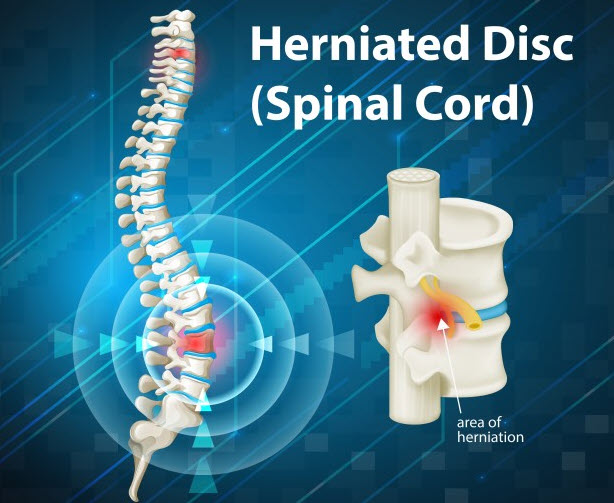The cervical portion of your spine is located in your neck, and pain can be significant when it is damaged. A cervical herniated disc is a condition that is often very painful, not only in your neck but also may reach down your arm all the way to your fingertips. It occurs when the inner core of a disc in your neck leaks outside of the disc, pressing on a nearby nerve root. Even though the discs aren’t very big, even a small cervical disc herniation can be extremely uncomfortable. Sometimes this problem can originate from a neck injury or trauma, but it’s not uncommon for a herniation to occur spontaneously. People aged 30 to 50 are most likely to experience a cervical herniated disc.
Symptoms
You may have symptoms in your neck, shoulder, arm, hand or fingers related to a cervical herniated disc. The reason that pain radiates outside of your neck is that the disc material presses on a cervical nerve, causing pain to travel down the nerve pathway. In addition to pain, you might experience numbness, tingling, or muscle weakness. The specific location of your herniated disc determines the pain patterns and other symptoms. For example, a herniation in one nerve may cause pain or numbness in the front of your arm and thumb side of your hand, while a herniation in a different nerve can be linked to symptoms in the back of your arm and pinky finger side of your hand. Every case is unique, so it’s important to see an experienced healthcare professional such as NYC Spine Surgeon Dr. Fischer at NYU Langone Medical Center in NYC for proper diagnosis and treatment.
Diagnosis
The ideal test for diagnosing a herniated disc is an MRI scan, which provides images of any nerve root being pinched by a damaged disc. Sometimes a CT scan with a myelogram is also recommended. It is a highly sensitive test that catches very minute cases of pinched nerve roots.
Non-surgical treatments
Conservative treatments are usually successful in relieving cervical herniated disc symptoms. Arm pain is typically at its worst after the nerve root is initially pinched, so if arm pain starts to go away it is not likely to return. Treatments for this condition often focus on improving arm pain, and usually numbness and weakness dissipate over time. Some of the most common non-surgical treatments that NYC Spine Surgeon Dr. Fischer finds successful include:
- Medications – Anti-inflammatory medications or COX-2 inhibitors help alleviate pain and swelling. Patients with severe pain may be prescribed oral steroids or narcotics for a short time. Muscle relaxants or anti-depressant medications may be used to improve sleep or help reduce nerve pain.
- Physical therapy – Specific exercises or modalities like ice/heat or ultrasound can relieve muscle spasms.
- Injections – Cervical epidural steroid injections or nerve blocks may be helpful in reducing inflammation and treating pain.
- Chiropractic manipulation – Manual manipulation may improve joint dysfunction if performed gently by a professional. High velocity adjustments are not recommended, however.
- Cervical traction – Traction on the head can relieve pressure on the nerve root, therefore reducing pain.
- Activity modification – Dr. Fischer will provide guidelines for activities to avoid while recovering from a herniated disc. Heavy lifting, overhead movements, and vibrating activities should be avoided.
- Bracing – A cervical collar or brace is sometimes recommended to help rest the cervical spine.
Surgery
Most of the time, non-surgical treatments remedy pain from a cervical herniated disc in several weeks to a couple of months. If pain persists more than 12 weeks or is debilitating, surgery may be the best option. Surgery for this condition has high success rates in providing relief, carrying a low risk of complications or failure. Recovery is relatively easy with minimal pain or side effects. If you experience symptoms of a cervical herniated disc, schedule an appointment with Dr. Fischer in NYC to begin your road to recovery.

